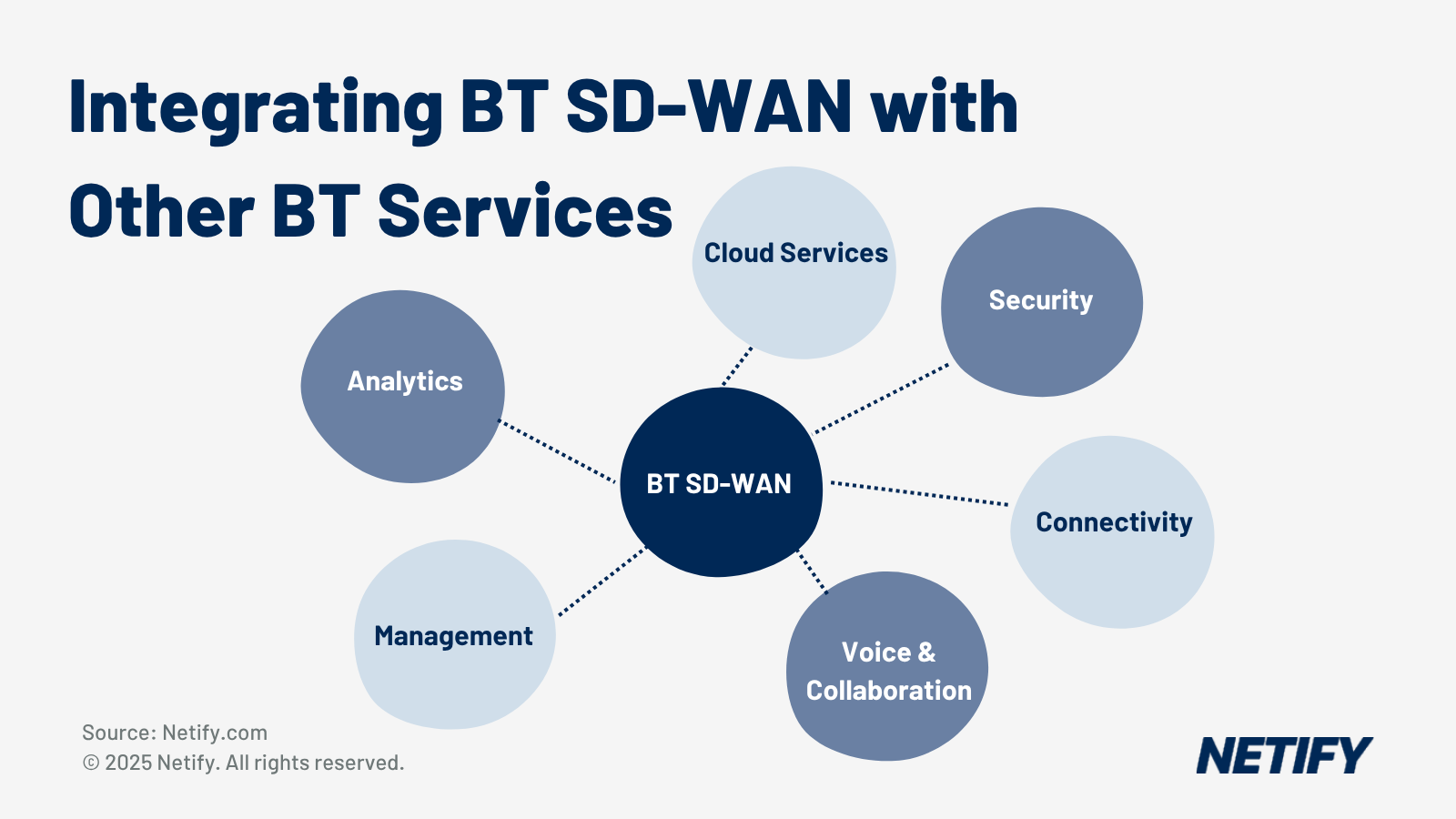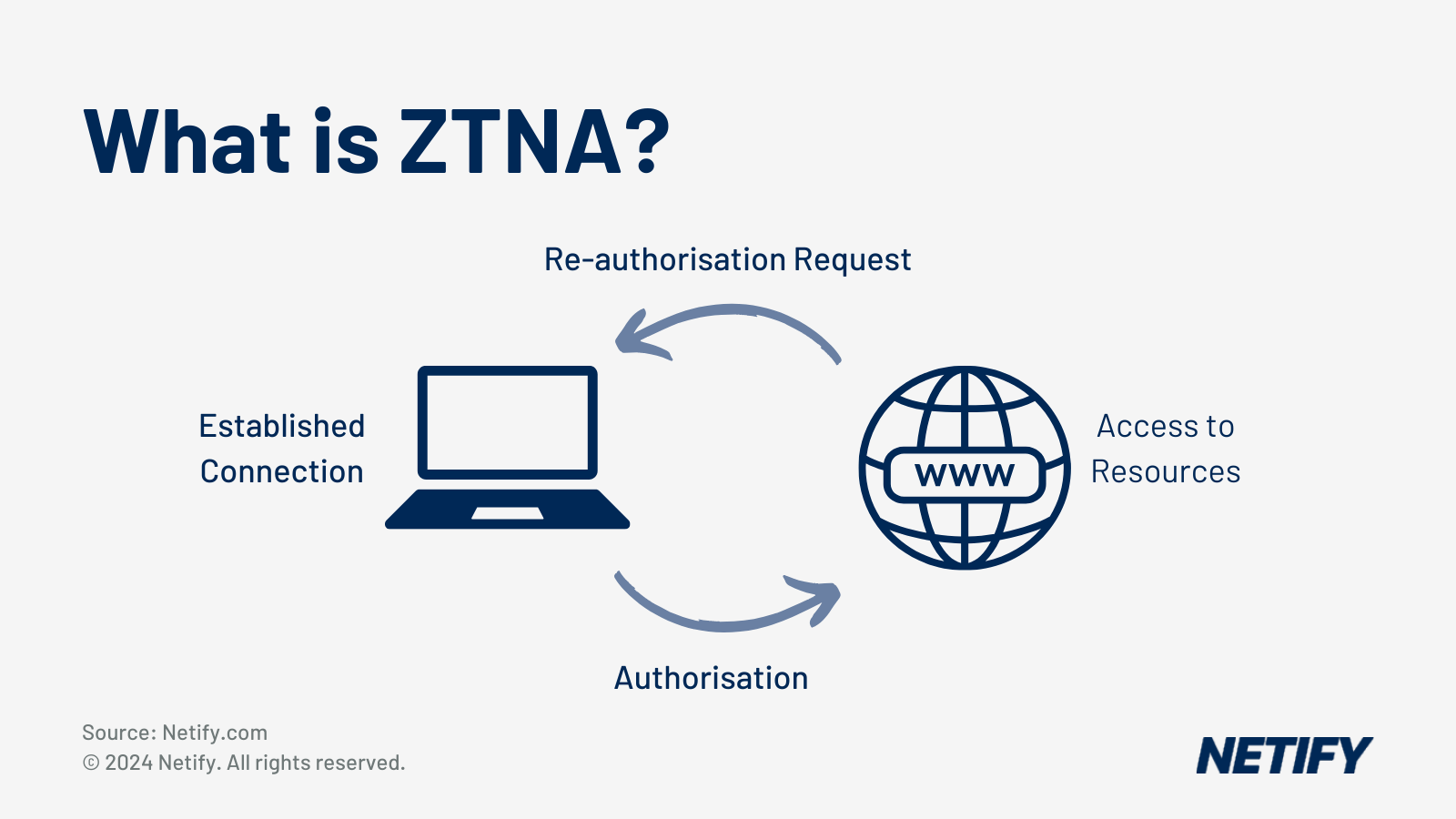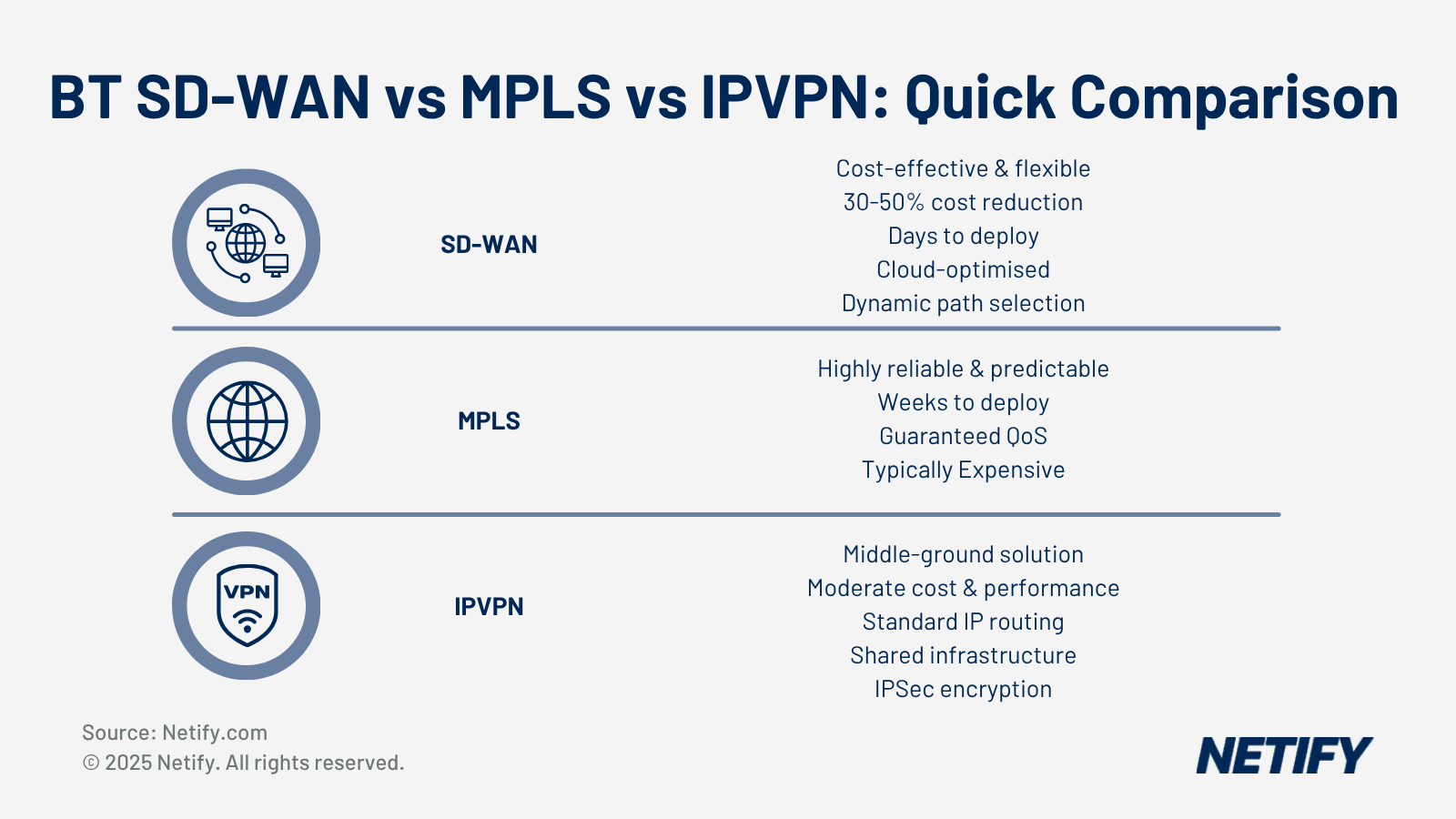Can BT SD-WAN Integrate with Existing BT Services?

For many businesses in the UK, BT's infrastructure is at the heart of their network and telecommunications and so, when moving to or considering SD-WAN solutions, these businesses often question how their existing infrastructure would work alongside BT SD-WAN. In this article, we'll explore the vast integrations that BT SD-WAN has to offer and why its "ability to integrate with other BT services" is arguably one of the most key benefits of BT SD-WAN.
One app to build and publish your personalised SD-WAN & SASE Network Security RFP with AI support
Over thirty curated SD-WAN & Network Security vendors & providers can respond directly to your RFP, get AI-scored comparisons, message instantly, book demos, provide proofs of concept, and supply global Internet connectivity pricing for a complete end-to-end business case.
Try our free RFP BuilderCore Integration Architecture
As with all SD-WAN solutions, BT's offers a single pane to manage all network activity, however unlike many other solutions, this pane is extended to interface with other BT services (via APIs), allowing different BT services to communicate and coordinate with one another automatically. For organisations with their own automation workflows, these APIs allow SD-WAN integration into broader IT service management processes.
For finance and procurement teams, BT consolidates billing and service management across all integrated services. Rather than receiving separate invoices for connectivity, security, cloud services and voice (each with different billing cycles and account structures) organisations receive unified billing that simplifies financial reporting, makes cost allocation more straightforward and reduces administrative overhead.
BT Cloud Services Integration
For organisations using BT's cloud offerings, SD-WAN provides optimised connectivity that treats cloud resources as natural extensions of the internal network.
BT Cloud Compute
BT Cloud Compute, the company's infrastructure-as-a-service platform operating from UK data centres, benefits from direct connectivity pathways and intelligent routing that prioritises application performance. Rather than cloud traffic traversing the public internet with its inherent unpredictability, SD-WAN establishes private connections to BT's cloud infrastructure, reducing latency and ensuring consistent user experience.
BT Cloud Storage
Integration with BT Cloud Storage enables automated backup and disaster recovery workflows. With BT SD-WAN, network policies can be configured to ensure backup traffic doesn't impact business-critical applications during working hours, scheduling large data transfers during evening periods. These policies guarantee that data protection activities complete within required timeframes whilst maintaining performance for day-to-day activities.
BT Cloud Voice
For organisations utilising BT Cloud Voice, integration via SD-WAN ensures that voice traffic receives appropriate bandwidth for smooth calls with minimal drop out. The system automatically identifies voice streams through deep packet inspection and applies quality-of-service policies that prevent call quality degradation, even during periods of network congestion. On top of this, BT SD-WAN offers performance monitoring tools that can provide real-time visibility into voice quality metrics, helping identify potential issues before they affect users.
BT Security Services Integration
At Netify, we'd suggest that security is often one of the biggest concerns when weighing up a move to a new network technology (such as SD-WAN), with security integrations running typically regimented in place, businesses find it difficult to trust moving away from them.
BT Managed Firewall services integrate at the SD-WAN edge, meaning each site benefits from enterprise-grade perimeter security without requiring dedicated appliances, ongoing firmware management or localised security expertise. Security policies are defined once centrally on the SD-WAN portal and then pushed automatically to all locations, ensuring consistent protection and minimising the risk of human error (where sometimes a branch might be forgotten about or take a bit longer to get updated). In our experience, this approach is particularly valuable for organisations with a vast number of branch offices, where deploying dedicated security staff to each one isn't practical or cost-effective.
And for those that don't necessarily rely on branch offices but more so remote workers and distributed workforces, the integration with BT Endpoint Security services extends protection to remote, mobile and hybrid workers. In a similar fashion to the above firewall services, BT enables these workforces to also have universally provided policies, alongside support for zero-trust security models - these ensure access is verified continuously rather than assumed based on network location.

For a Deeper Dive on Zero Trust Network Access, we'd recommend our market guide.
We've found that BT's integrated platform makes implementing these advanced security models practical for organisations that might lack the expertise to build such capabilities independently and provides your business with a more "out-of-the-box" experience.
BT Connectivity Services Integration
One of SD-WAN's greatest strengths is its flexibility in working alongside traditional connectivity methods and this is no different for BT SD-WAN.
For organisations with existing BT Ethernet connections, BT SD-WAN doesn't require wholesale replacement of infrastructure that's working effectively. Instead, you can maintain these dedicated Ethernet circuits for applications that genuinely require guaranteed bandwidth and predictable performance, whilst simultaneously deploying more cost-effective underlay connectivity for general office traffic such as email, web browsing and standard business applications.
For customers currently using BT's MPLS services, BT provides clear migration pathways that allow gradual transition rather than forcing disruptive "rip and replace" approaches. During migration periods, MPLS and SD-WAN can coexist, supporting phased implementations that minimise business disruption. Sites can be migrated individually or in groups, with the SD-WAN controller managing connectivity between migrated and non-migrated locations without adding complexity. In our experience, this proves particularly valuable for large organisations with many locations, where immediate wholesale migration simply isn't practical.

Explained: BT SD-WAN vs BT MPLS and IPVPN
Finally, BT offers BT Mobile integrations that add 4G/5G connectivity as either backup or primary connections depending on your requirements. When configured as backup, the failover from primary circuits to mobile connectivity completes within seconds (fast enough that established application sessions continue without interruption), meaning users often won't even notice a primary connection has failed. For remote sites where traditional connectivity options are limited or too expensive, 5G can serve as the primary connection, with SD-WAN managing traffic intelligently across available links to ensure consistent performance.
BT Voice and Collaboration Integration
How SD-WAN Enables BT Cloud Voice & Collaboration
BT One Voice Priority
SD-WAN automatically identifies and prioritises voice traffic with intelligent QoS management. Maintains sub-150ms latency, minimal jitter, and zero packet loss through continuous monitoring and dynamic routing adjustments, ensuring call quality even during network congestion.
BT Meet Me Conferencing
Dynamic bandwidth allocation adapts to meeting requirements in real-time. A 30-person video conference receives different prioritisation than a two-person audio call, with intelligent resource management ensuring optimal quality without wasting network capacity.
Contact Centre Quality
Customer interactions receive priority treatment with continuous automated quality monitoring. Proactive alerts flag potential issues before they impact customer experience, protecting satisfaction levels, reducing call duration, and improving first-call resolution rates.
BT Collaborate Unified Experience
Seamless integration across messaging, voice, video, and collaboration tools with consistent performance regardless of user location. Uniform security policies and access controls support flexible working arrangements whilst maintaining enterprise-grade protection.
BT Data and Analytics Integration
With BT SD-WAN data is collated, combining the output of multi-vendor environments into complete network insights. Rather than consulting separate reporting tools for each service, IT teams access consolidated dashboards showing performance, utilisation, and trends across all BT services. This holistic view supports capacity planning and informed decisions about network investments.
BT Performance Monitoring provides end-to-end visibility into service delivery, tracking metrics from the user's device through the SD-WAN fabric to application endpoints. This is extended by their cross-service correlation capabilities that assist with identifying root causes, examining events across different services simultaneously, often identifying root causes within minutes rather than hours.
Implementation and Migration Considerations
BT's professional services team provides support throughout integration projects, from initial design and planning through implementation and optimisation. Alongside this, service level agreements (SLAs) are aligned across integrated services, ensuring consistent performance commitments and clear accountability when issues arise.

Harry holds a BSc (Hons) in Computer Science from the University of East Anglia and serves as a Cybersecurity Writer here at Netify, where he specialises in enterprise networking technologies. With expertise in Software-Defined Wide Area Networks (SD-WAN) and Secure Access Service Edge (SASE) architectures, Harry provides in-depth analysis of leading vendors and network solutions.
Fact-checked by: Robert Sturt - Managing Director, Netify


